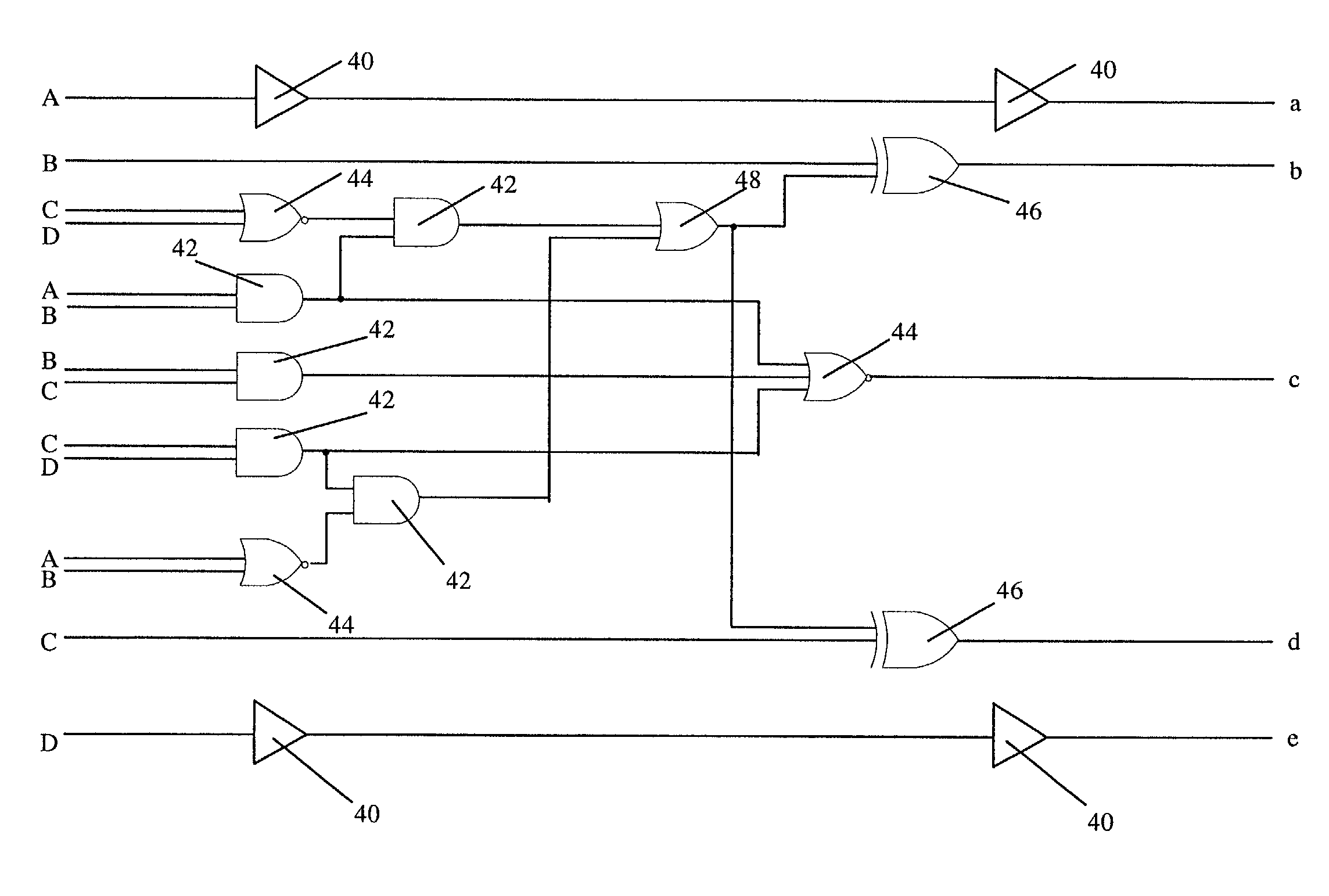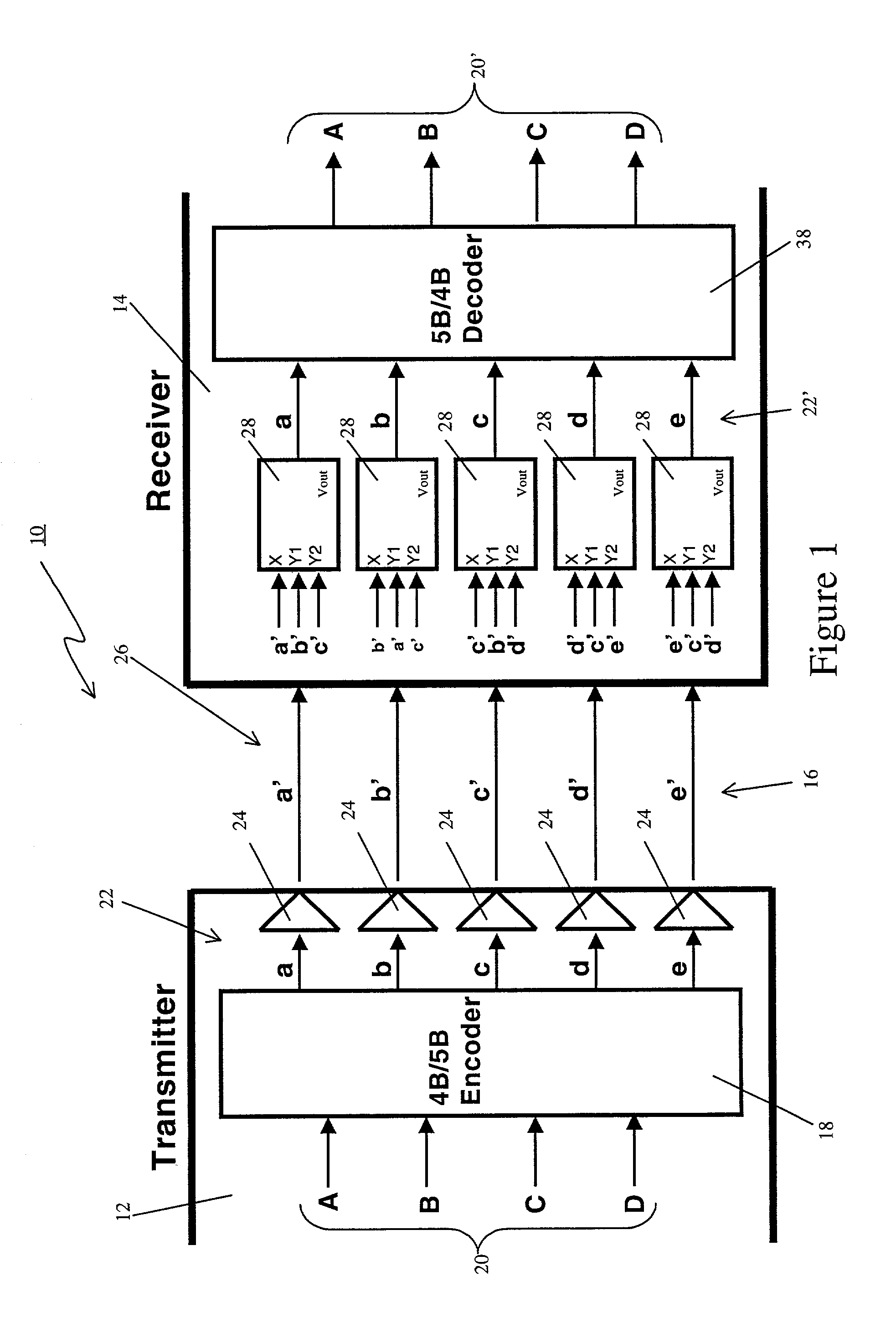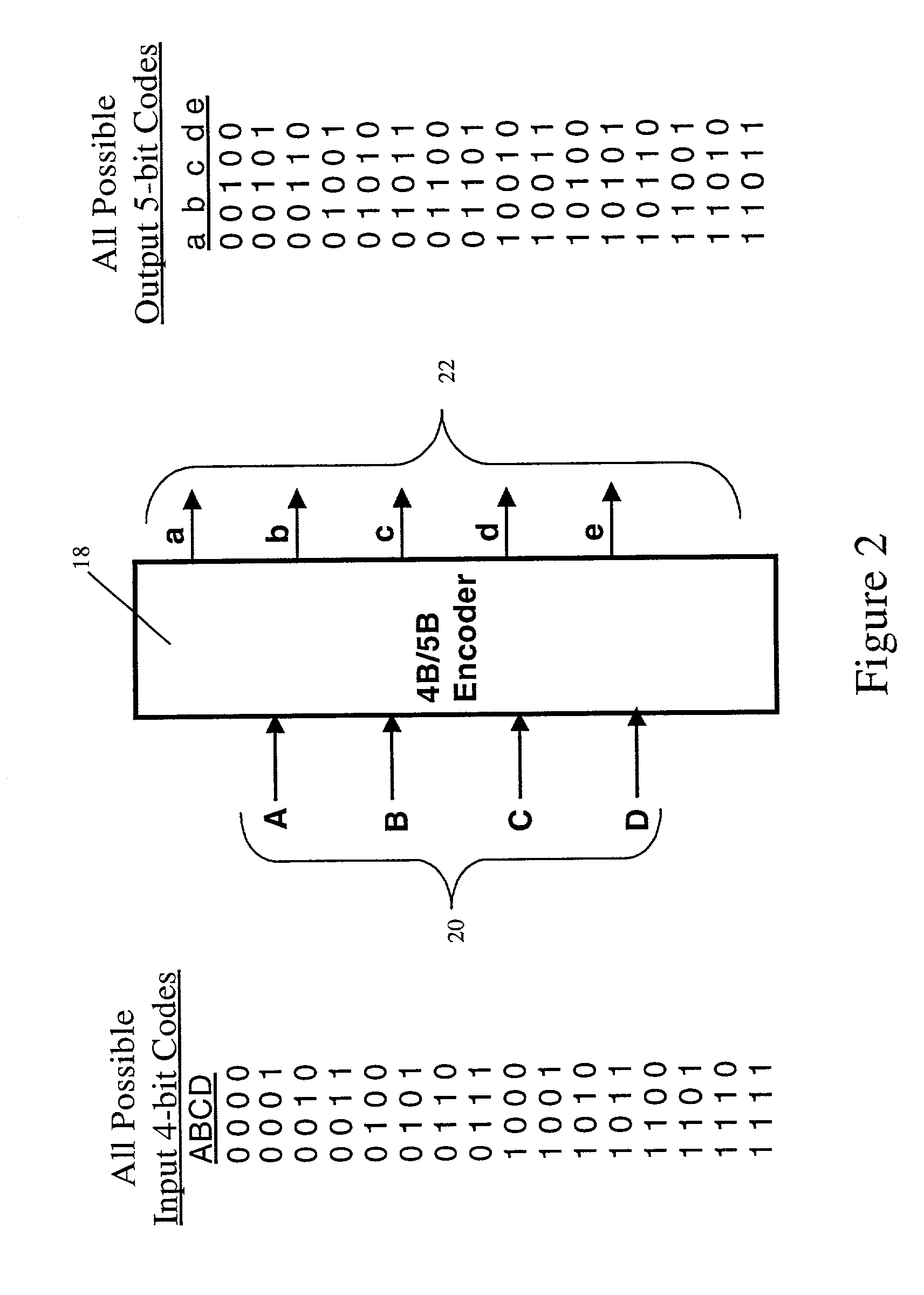Technique for emulating differential signaling
a technology of differential signaling and signal pin count, applied in the field of signal transmission techniques, can solve the problems of differential signaling being prohibitive in terms of signal pin count, packaging size, cost, etc., and achieve the effect of improving recovery
- Summary
- Abstract
- Description
- Claims
- Application Information
AI Technical Summary
Benefits of technology
Problems solved by technology
Method used
Image
Examples
Embodiment Construction
)
[0025]Referring to FIG. 1, there is shown a system 10 for emulating differential signaling in accordance with the present invention. The system 10 emulates differential signaling in accordance with the present invention by obtaining at least some of the above-described advantages of differential signaling without actually generating traditional differential signals and thereby realizing the above-described disadvantages associated with differential signaling. The system 10 comprises a transmitter 12 and a receiver 14 interconnected by a plurality of electrically conductive signal paths 16.
[0026]At this point it should be noted that the system 10 may be encompassed within a single integrated circuit, or formed with several integrated or discrete circuits. For example, the transmitter 12 and the receiver 14 could each be an integrated circuit, and the plurality of electrically conductive signal paths 16 could be a plurality of transmission lines. More particularly, the transmitter 12...
PUM
 Login to View More
Login to View More Abstract
Description
Claims
Application Information
 Login to View More
Login to View More - Generate Ideas
- Intellectual Property
- Life Sciences
- Materials
- Tech Scout
- Unparalleled Data Quality
- Higher Quality Content
- 60% Fewer Hallucinations
Browse by: Latest US Patents, China's latest patents, Technical Efficacy Thesaurus, Application Domain, Technology Topic, Popular Technical Reports.
© 2025 PatSnap. All rights reserved.Legal|Privacy policy|Modern Slavery Act Transparency Statement|Sitemap|About US| Contact US: help@patsnap.com



